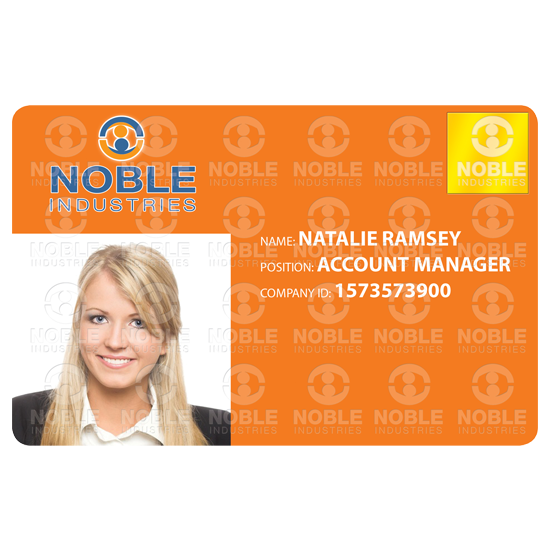7 Steps to Choosing the Best ID Card for your Bank Staff

Staff ID Cards for banking employees are essential. The best id cards on the market not only provide a visual confirmation of an employee but can also provide many other attributes to streamline personnel processes.
ID badges can play a pivotal role in a bank’s security plan, and creating the right card is imperative to achieving security goals. By considering the following seven ID card components, banks can create the perfect ID card to meet their needs.
1. Bank Logo
Adding your logo adds an excellent visual security element to ID Cards. Ensure that your ID Card design is consistent with your branding
style sheets including font, colour and images. This reinforces your bank’s branding message as well as providing a recognisable image for your employees and security personnel. If you are concerned about forgery of your ID Cards, adding a HoloKote overlay to your printer can protect you. HoloKote provides a frosting overlay of your logo on ID Cards that can be seen when turned at an angle. The Magicard Rio Pro Printer is one of the only ID Card printers to provide this security solution.
2. Single or Dual-Sided Staff ID Cards
Depending on your security needs, ID Cards can either be single sided or dual sided. For your own bank, consider what is best for you in terms of card function and space required. A dual-sided card has the obvious benefit of having lots of space for information without sacrificing design. For example, a dual-sided card allows you to put emergency contact information or your mission statement on the rear.
3. Employee Image
It is standard now for ID’s to include an image of an employee on the front of the card. When taking a photo of the employee for use on ID cards, ensure that there is a clear background and that the employee’s face is easily visible. The photograph should be easily visible on the card itself so security can easily identify the individual entering the premises.
4. Orientation
ID cards can be displayed either horizontally or vertically and this will impact how your employees wear your cards. If your employees work in a retail bank and are customer facing, consider how you would like your brand to be shown. Remember, these cards are also marketing material so it should be easily read by customers. If an employee needs to swipe to enter your building, consider which orientation would suit employees in this scenario.
5. Durability
ID cards which are made of durable materials like PVC or HID smart cards require fewer reprints and can last up to 5 years. These cards are difficult to copy since a dedicated ID card printer is required to print them. PVC cards also last longer than paper ID’s especially with wear and tear or the changeable weather that the Irish weather can be.
6. Encoding ID cards
Having ID Cards which include features such as barcodes, magnetic stripes, RFID tags or smart chips can contain information about the user on the staff ID cards. These features allow banks to sync identification with building access or time and attendance programs. These features can ultimately save a bank money when combined with card readers to provide access to employees to certain areas. This relieves banks of having to provide additional security in critical areas.
7. Signatures on cards
Being a bank, security is of the highest importance. If a visual photo is not security enough, using ID cards with a signature strip on the rear, allows you to provide that extra layer of security for your needs. This provides an instant way of detecting fraudulent cards or unauthorised visitors.
Utilising these seven components will result in the ideal ID card for your bank or financial institution. Accompanying this with an ID card printer such as the Rio Pro Duo will complete your employee security needs.

